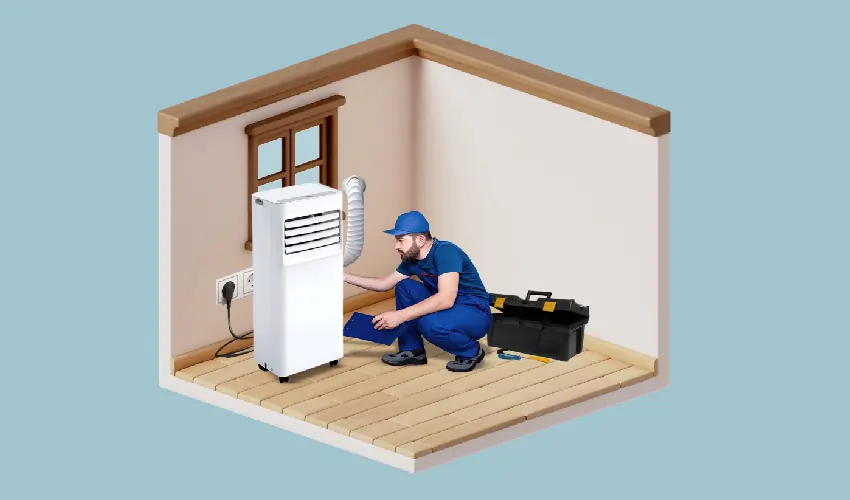
Portable air conditioners offer a convenient way to cool your home without the hassle of permanent installations. However, transporting and installing these units safely is crucial to ensure their longevity and effectiveness. Improper handling can lead to damage, void warranties, and even pose safety hazards. This article will guide you through the essential safety tips and best practices for transporting and installing your portable AC unit.
This comprehensive guide will delve into the intricacies of safe portable AC transport, emphasizing the importance of manufacturer instructions and proper installation techniques. We’ll explore the potential risks associated with horizontal transportation and highlight the significance of adhering to warranty guidelines. By following these recommendations, you can ensure a smooth and safe experience when setting up your portable air conditioner.
Portable AC Transport Safety
Transporting a portable AC unit requires careful consideration to prevent damage to its internal components. These units are often delicate and susceptible to harm if not handled correctly. Always prioritize safety during transport by securing the unit firmly in place to prevent shifting or movement during transit.
Avoid overloading your vehicle when transporting a portable AC. Ensure the unit is properly secured with straps or ropes to prevent it from sliding around or falling out of the vehicle. Remember, a secure and stable transport environment minimizes the risk of damage during transit.
Horizontal Transportation Guidelines
While some portable AC units may be designed for horizontal transportation, it’s crucial to consult your manufacturer’s instructions before laying or putting your unit on its side. Improper handling can lead to refrigerant leaks, compressor damage, and other internal issues.
If your unit is approved for horizontal transport, ensure a soft, padded surface is used to protect the delicate components during movement. Avoid dragging or dropping the unit, as this can cause significant damage. Always handle it with care and support its weight evenly.
Manufacturer-Specific Instructions
Always refer to your specific portable AC unit’s manual for detailed instructions regarding horizontal transportation. The manufacturer will provide clear guidelines on whether horizontal transport is permissible and any necessary precautions to take.
Adhering to these instructions ensures you are handling your unit safely and minimizing the risk of damage. Remember, each model may have unique requirements, so consulting the manual is essential.
Manufacturer Instructions Importance
The manufacturer’s instructions for your portable AC unit are your primary guide for safe and effective operation. These instructions cover a wide range of topics, including transportation, installation, maintenance, and troubleshooting.
By carefully reading and following these guidelines, you can ensure that your unit is installed correctly, operated safely, and maintained properly to extend its lifespan. Remember, neglecting the manufacturer’s instructions can lead to malfunctions, damage, and even void your warranty.
Warranty Considerations
Most portable AC units come with a warranty that covers defects in materials and workmanship. However, warranties often have specific conditions and exclusions. One common exclusion is damage caused by improper handling or installation.
Therefore, it’s crucial to follow the manufacturer’s instructions meticulously to avoid voiding your warranty. If you encounter any issues during transport or installation, consult the warranty terms or contact the manufacturer directly for guidance.
Safe Installation Practices
Once you have safely transported your portable AC unit, proper installation is essential for optimal performance and safety. Choose a well-ventilated location near an electrical outlet and ensure the unit is level on a stable surface.
Connect the exhaust hose to the window kit securely, ensuring a tight seal to prevent hot air from escaping back into the room. Follow the manufacturer’s instructions carefully when connecting the power cord and any other necessary components.
Conclusion
Transporting and installing your portable AC unit safely requires attention to detail and adherence to manufacturer guidelines. By prioritizing safety during transport, understanding horizontal transportation limitations, and following installation instructions meticulously, you can ensure a smooth and successful setup. Remember, proper handling not only protects your investment but also contributes to the longevity and efficient operation of your portable air conditioner.
